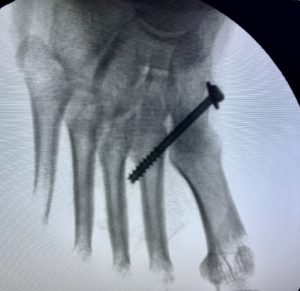Foot and ankle injuries bring many sportsmen to halt all of a sudden. Complaining of pain, stiffness, swelling or various deformities are the common conditions with foot & ankle injuries.

The common foot conditions often are:
Ankle Ligament Sprains and Ruptures:
Ligaments are bands of connective tissue that provide stability and strength to joints by binding bones to other bones. When a sprain occurs, one or more ligaments have been stretched or torn. While most sprains are minor and will heal with rest and ice, if swelling and pain persist, it is important to seek the help of a physician. In fact, moderate and severe sprains that are left untreated can weaken the ankle over time and even cause repeated sprains or lead to other ankle injuries. Ultimately, repeated ankle sprains can cause arthritis.
Tendoachilles Injuries:
The largest tendon in the body, the Achilles connects the two primary calf muscles to the bone in the heel. The tendon runs lengthwise down the back of the ankle and it is particularly susceptible to inflammation because of overuse. This condition is called Achilles tendonitis and can be addressed with tendonitis ankle treatment. Those suffering from Achilles tendonitis are also more prone to an Achilles tear or full rupture after repetitive inflammation and damage have been built up over time. However, this injury can also occur because of sudden trauma. If a patient hears a popping noise or sensation and experiences heel pain after landing a jump, the Achilles tendon may have ruptured.
Plantar Fasciitis and Calcaneum Spurs:
One of the most common foot and ankle injuries in adults is Plantar Fasciitis. Most patients suffering from this condition complain of pain with the first few steps they take after waking up or after resting for a prolonged period. Once the band has time to stretch, the pain will often subside significantly but will continue to flare up again after each time that it is rested. Some cases of Plantar Fasciitis can be resolved simply with rest, ice and stretching, while others will need to take anti-inflammatory medication and wear a heel pad before finding relief.
Retrocalcaneal Bursitis:
Retrocalcaneal bursitis happens when the bursae at the back the heel become inflamed. It’s common in athletes, especially runners and ballet dancers. It happens due to overuse from walking, running, or jumping. The main symptom of retrocalcaneal bursitis are heel pain and swelling. This condition is amenable to conservative treatment, however sometimes the pain may increase with time and require surgical procedure.
